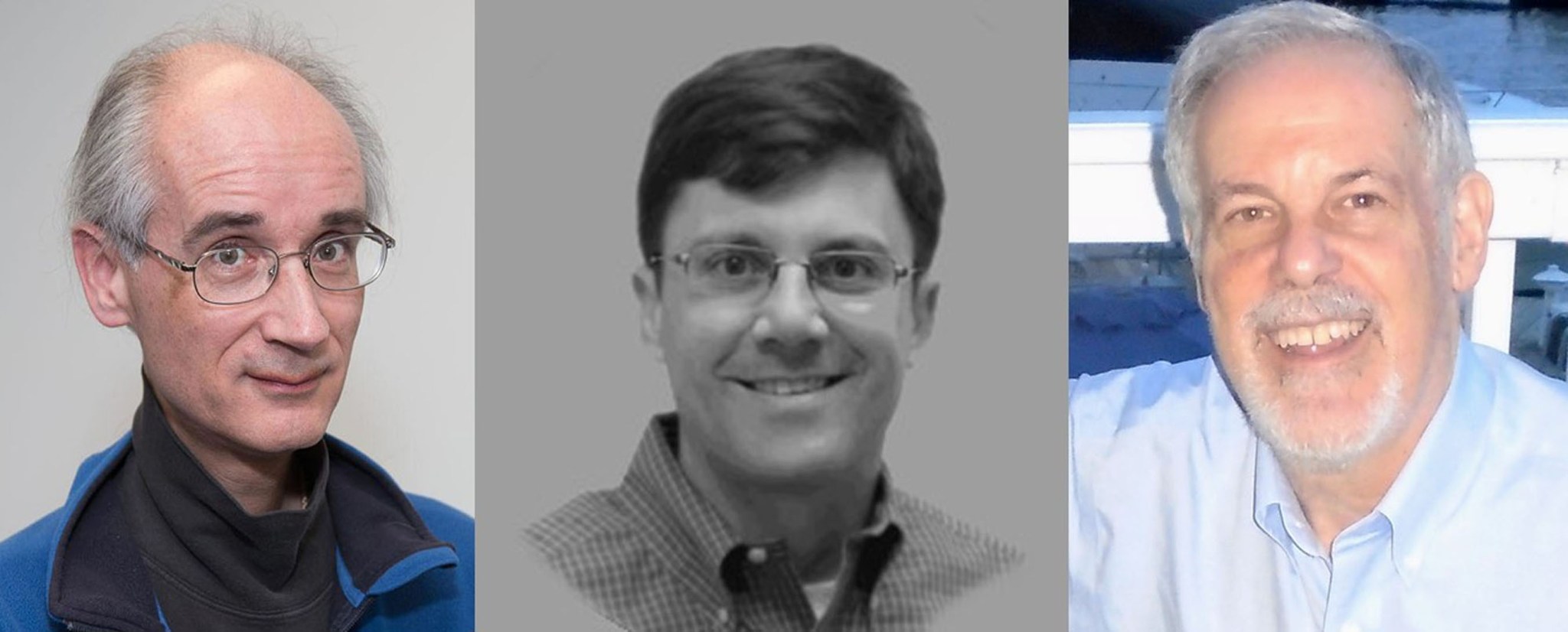Three individuals with NASA affiliations have received 2022 honors from the American Astronomical Society (AAS), a major international organization of professional astronomers.
Richard Mushotzky, Brad Cenko, and Keith Arnaud of NASA’s Goddard Space Flight Center in Greenbelt, Maryland, received AAS prizes for outstanding achievements in research and education.
“We at Goddard are extremely proud of the accomplishments of these three scientists. It is a delight to see their significant contributions to astrophysics recognized by their colleagues,” said Dr. Robert Petre, Director, Astrophysics Science Division at NASA Goddard.
Richard Mushotzky was awarded the AAS 2022 Henry Norris Russell Lectureship award, celebrating a career of eminence in astronomical research. The AAS award is “for a lifetime of innovative X-ray and multiwavelength research, including foundational studies of the properties of active galactic nuclei and the composition and structures of hot gas in clusters of galaxies. His highly productive career also included co-invention of the X-ray calorimeter, a device used to detect and measure the energy of X-ray photons, revealing detailed information about energetic astrophysical phenomena in our universe.”
Mushotzky has a long history of research in high-energy astrophysics and has recently focused on understanding the triggering mechanisms in active galaxies (why some massive black holes are accreting and others are not), the nature of ultra-luminous X-ray sources and whether they are intermediate black holes, the evolution of active galaxies across cosmic time, the nature of the innermost regions around supermassive black holes, and the physics of clusters of galaxies and their use as tracers of metal production in the universe.
He has been involved in the acquisition, analysis, and interpretation of data from many of the X-ray spectroscopy and imaging experiments flown in the last 35 years, including OSO-7, OSO-8, HEAO-1, HEAO-2, EXOSAT, Ginga, Rosat, BBXRT, ASCA, XMM, Chandra, XTE, Suzaku, and Hitomi. He was an interdisciplinary scientist on the Chandra science working group; a member of the ASTRO-E, Suzaku, and Hitomi science advisory group; a mission scientist on the XMM Science Advisory Group; and the NASA XMM project scientist. He supervised the PhD thesis of 18 students and worked closely with numerous post-doctoral research fellows and other graduate students.
He received the NASA Medal for Exceptional Scientific Achievement in 1983 and 2003, the NASA Exceptional Achievement award, the Goddard Lindsay Award for Scientific Achievement, Robert Goddard Award, Israel Pollack Distinguished Lecturer Award from Haifa University in Israel, and the NASA Distinguished Service Medal. He is the author or co-author of over 470 papers with 38,000 citations.
Mushotzky will present the Russell Lecture at the January 2023 AAS meeting in Seattle, Washington.
Brad Cenko was awarded the AAS 2022 High Energy Astrophysics Division (HEAD) Mid-Career Prize “for outstanding leadership, discovery, and characterization of high-energy transient phenomena from tidal disruption events, counterparts to gravitational wave mergers, and gamma-ray bursts.”
Cenko is a research astrophysicist at NASA Goddard, as well as an adjunct rofessor in the Department of Astronomy at the University of Maryland, College Park. He has served as the principal investigator of the Neil Gehrels Swift Observatory since 2017, and also serves as the chair of the Science Steering Committee for the Zwicky Transient Facility.
His research interests are varied but largely fall under the rubric of observational time-domain astronomy, including gamma-ray bursts, supernovae, and tidal disruption events. He is also intent on developing instrumentation and software to enable novel observations of such time variable phenomena. He is co-author on over 400 refereed publications, with 33,000 citations.
Keith Arnaud of NASA Goddard and the University of Maryland was awarded the High Energy Astrophysics Division (HEAD) Innovation Prize that recognizes the development of foundational, innovative, and/or revolutionary instrumentation or software tools that have led to groundbreaking results in high-energy astrophysics. The 2022 Innovation Prize was awarded “for continuous innovation in developing and maintaining XSPEC, the X-ray spectral fitting package, which has become the world standard for analysis of spectra from X-ray and gamma-ray missions.” XSPEC has been used in over 12,000 refereed publications.
Arnaud’s scientific interests have covered clusters of galaxies, active galactic nuclei, astro-statistics, and computational methods. Arnaud joined the University of Maryland and Goddard in 1988. He participated in the BBXRT experiment on the Astro-1 space shuttle mission. He collaborated with colleagues in Japan on the ASCA, Suzaku, and Hitomi X-ray astronomy satellites.
In 2001 he co-founded a series of U.S. X-ray astronomy schools intended for graduate students and young postdocs as an introduction to the practical side of X-ray astronomy. An outgrowth of these schools was a book, “Handbook of X-ray Astronomy,” published by Cambridge University Press for which Arnaud was lead editor. He has participated in many COSPAR Capacity Building Workshops, designed to build expertise in space-based science in countries and regions which may not currently have active programs.
He is an AAS member and Fellow of the Royal Astronomical Society. He was Treasurer of the AAS High Energy Astrophysics Division and served on the COSPAR Committee on Capacity Building, the National Academy of Sciences Decadal Survey Study Group on Computation and Data Handling, and the Chandra Users’ Committee. He has received the Astronomical Society of Japan Excellent Paper Award and ten NASA group achievement awards. He authored or co-authored over 70 refereed publications. His refereed and non-refereed publications have almost 13,000 citations.
The American Astronomical Society was established in 1899 to organize networks of observatories in cooperative research programs and provide the means by which both experienced and young astronomers could share methods and knowledge. The mission of the AAS is to enhance and share humanity’s scientific understanding of the universe as a diverse and inclusive astronomical community.
For more about AAS, visit: https://aas.org/about-aas
For information about NASA and agency programs, visit: https://www.nasa.gov
Rob Gutro,
NASA’s Goddard Space Flight Center



























